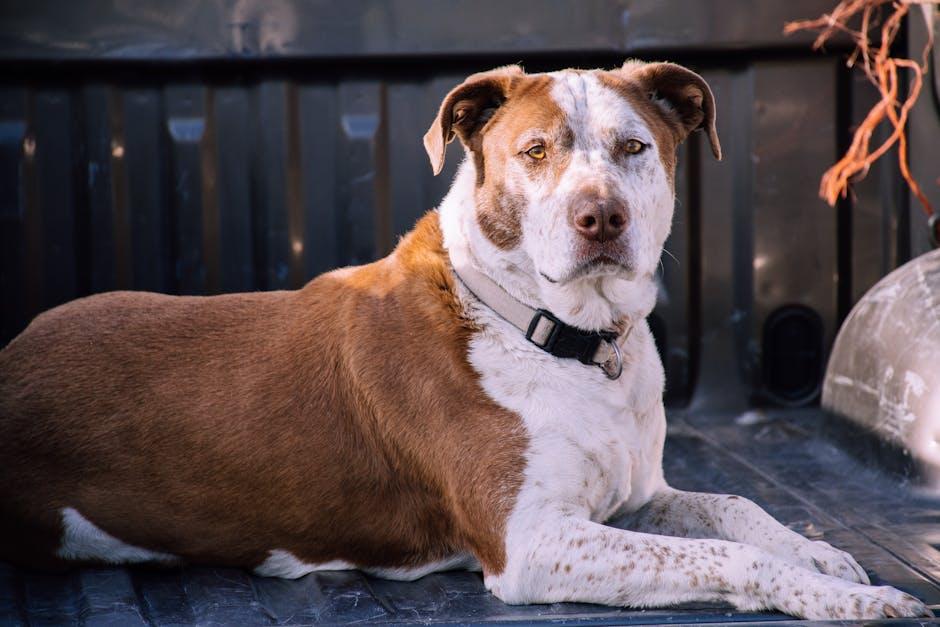Securing a dog collar properly is one of the most important steps in ensuring your furry friend’s safety and comfort. Whether you’re a new pet parent or a seasoned dog owner, understanding how to choose and fit a collar correctly can make all the difference during daily walks, playtime, and unexpected adventures. In this guide, we’ll explore the best ways to ensure your dog’s collar is not only secure but also comfortable, providing you with peace of mind and your canine companion with the freedom to explore the world safely. Let’s dive into the essentials of collar security and make every outing a joyful experience for both you and your dog.
Choosing the Right Fit for Your Furry Friend
Ensuring your dog’s collar is both comfortable and secure is crucial for their safety and happiness. Begin by selecting a collar that is appropriately sized; it should sit snugly around your dog’s neck without being too tight. As a rule of thumb, you should be able to fit two fingers between the collar and your dog’s neck. This allows for comfort while preventing them from slipping out. When adjusting the collar, pay attention to the type of buckle—quick-release buckles are convenient, but ensure they are sturdy enough to withstand a good pull from an enthusiastic pup.
- Check Regularly: Dogs grow and their weight can fluctuate, so regularly check the fit of the collar.
- Choose the Right Material: Opt for durable materials like leather or nylon that can handle wear and tear.
- Inspect for Wear: Routinely inspect the collar for signs of wear and tear, replacing it when necessary to avoid breakage.
Remember, a well-fitted collar is not only a tool for control but also a means to express your dog’s personality. Choose colors and styles that reflect their spirit, but never compromise on fit and safety. A properly secured collar is a small step towards ensuring your dog’s wellbeing, allowing them to explore the world with confidence and flair.

Understanding Material Strength and Durability
Ensuring that a dog collar is both strong and durable is crucial for your pet’s safety. When selecting a collar, it’s important to consider the material’s strength and durability. Materials like nylon, leather, and biothane are popular choices due to their resilience and comfort. Nylon is known for its lightweight and water-resistant properties, making it ideal for active dogs. Leather offers a classic look and, with proper care, can last for years, adapting to your dog’s neck over time. Biothane, a synthetic material, combines the best of both worlds, offering flexibility and easy cleaning without sacrificing durability.
- Nylon: Lightweight and resistant to water.
- Leather: Classic, durable, and becomes more comfortable over time.
- Biothane: Synthetic, flexible, and easy to clean.
For enhanced security, always check the stitching and hardware of the collar. Double stitching can provide extra strength, while stainless steel or brass hardware resists rust and wear. It’s also important to adjust the collar to fit snugly yet comfortably. A good rule of thumb is the “two-finger test”: you should be able to fit two fingers between the collar and your dog’s neck. This ensures that the collar is secure without being too tight, preventing discomfort or injury. Regularly inspect the collar for signs of wear and tear, and replace it if necessary to maintain its effectiveness.

Ensuring Comfort and Safety with Proper Adjustment
Finding the right balance between comfort and safety when adjusting your dog’s collar is crucial for their well-being. A collar that’s too tight can cause discomfort and even health issues, while a loose one may lead to dangerous situations if your dog slips out. To ensure a perfect fit, use the “two-finger rule”: after placing the collar around your dog’s neck, you should be able to slide two fingers comfortably between the collar and their skin. This method provides enough space for comfort while ensuring the collar is snug enough to prevent slipping.
- Check Regularly: Dogs grow and their weight fluctuates, so it’s important to check the fit of the collar regularly, especially for puppies.
- Opt for Adjustable Collars: Choose collars that are easy to adjust, offering flexibility as your dog grows or as seasons change with varying fur thickness.
- Observe for Discomfort: Pay attention to signs of irritation or distress, such as excessive scratching or rubbing, which might indicate an ill-fitting collar.
Remember, a well-adjusted collar not only keeps your dog safe but also ensures they can explore their world comfortably and confidently.

Regular Maintenance Tips for Long-Lasting Security
Ensuring the longevity and security of your dog’s collar involves a few regular maintenance habits. First, always check for wear and tear. Look for fraying or stretching in fabric collars, and inspect metal buckles for rust or damage. A compromised collar can be dangerous if it breaks during a walk. Make it a habit to clean the collar regularly to prevent buildup of dirt and bacteria, which can weaken the material over time. For fabric collars, a gentle wash with mild detergent will do, while leather collars benefit from a leather conditioner to maintain their suppleness.
- Adjust the fit regularly: Ensure the collar isn’t too tight or too loose. You should be able to fit two fingers comfortably between the collar and your dog’s neck.
- Rotate between collars: Having a couple of collars to alternate can reduce wear and give each one time to rest and regain shape.
- Check the ID tags: Ensure they are legible and securely attached, as these are crucial in case your pet gets lost.
By integrating these simple practices into your routine, you can extend the life of your dog’s collar and ensure it remains a reliable tool for your pet’s safety.

